The Golden Ratio
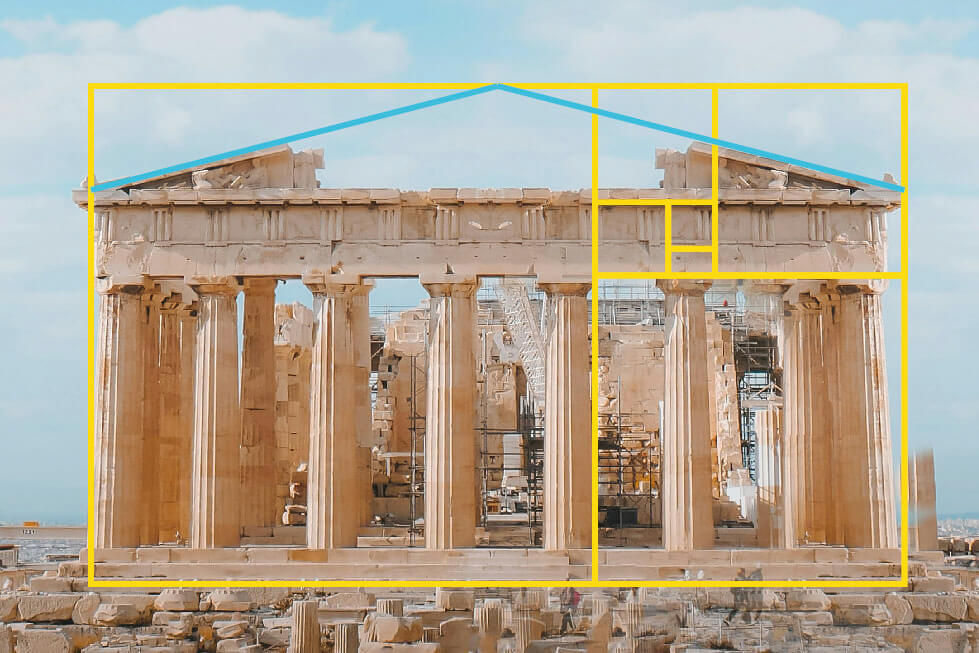
What is the golden ratio? and why does it fascinate artists so much?
If you are among those who are still unclear about what this ‘magic’ number is, read the answers to your (and our) questions here!
The most magical number in art history is:
x = ½ (–1 + √5) ≈ 0.61803398875, the golden ratio
It is an irrational number, which is basically the part of a segment that is proportional to the whole segment and its remaining part.
What?
If we look around us, the relationships between the parts that make up many natural objects (different shells, plants, flowers…) and many works of art, whether paintings, sculptures or architecture, reflect the golden ratio.
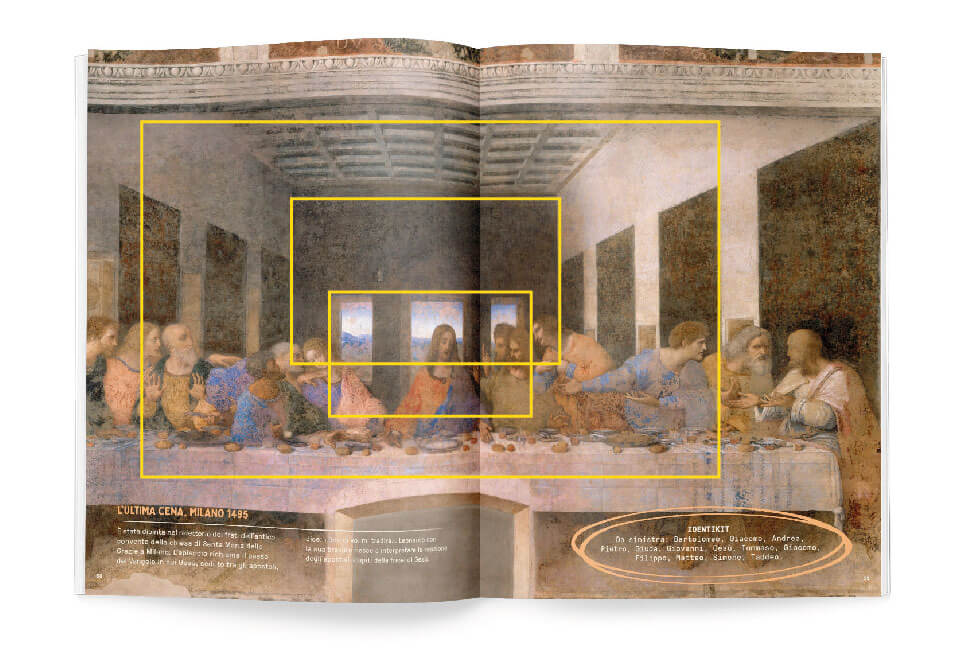
But why are we so fascinated by these shapes?
Perhaps it is because humans are biologically and physiologically oriented towards universal aesthetic standards typical of the human species, or perhaps it is because the field of vision of binocular vision (i.e. human vision) is a rectangle with dimensions very close to those typical of the golden ratio, but the fact remains that we can see how many artists have sought these proportions in their works.
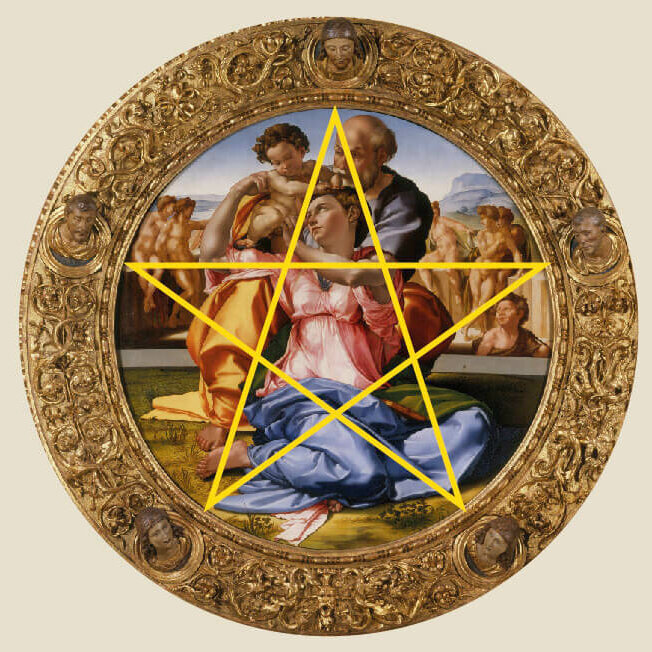
Which works in art history display these proportions?
We can clearly see the golden ratio in the Egyptian mask of Pharaoh Tutankhamun, in Polykleitos’ Doryphoros, and in the Riace Bronzes, to name just a few examples from ancient art.
In the Renaissance, the golden ratio can be found in Donatello’s sculptures, Piero della Francesca’s paintings, Michelangelo’s Doni Tondo, Raphael’s Crucifixion…
Looking at Botticelli’s Venus, both as a whole and in detail, the golden proportions are evident: the arrangement of the figures in space is subject to the rule of golden rectangles; the painting itself is a golden rectangle as a whole (its dimensions are 172.5 cm x 278.05 cm); measuring the height from the ground to the navel and the overall height, their ratio is 0.618, as is the ratio between the distance between the neck of the femur and the knee and the length of the entire leg, or even the ratio between the elbow and the tip of the middle finger and the length of the arm.
Leonardo da Vinci, perhaps more than anyone else, investigated the golden ratio as both a scientist and an artist: in Vitruvian Man, he identified the perfect proportions of the human body and produced over 60 drawings based on the studies of mathematician Luca Pacioli.
He also applied these “perfect” proportions in the Mona Lisa and The Last Supper.
In this last work, the panel is positioned so as to divide the total height into two parts that are in the golden ratio to each other; the disciples to the right and left of Christ both divide the painting into two vertical strips of widths in the golden ratio to each other. Jesus in the centre is enclosed in a rectangle and painted according to “divine” proportions.
In modern times, various golden ratios can also be found in the works of Seurat, Mondrian and Dalí…
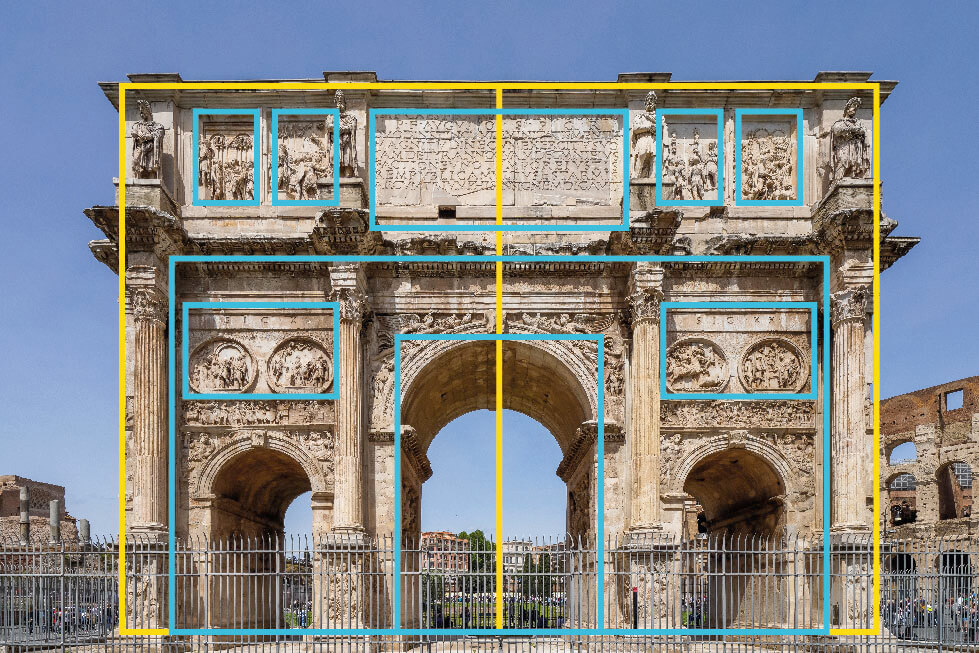
Are these proportions only found in paintings and sculptures?
The golden ratio can also be found in architecture – the Parthenon, the Arch of Constantine, Notre Dame and, in more modern times, Le Corbusier’s Modulor, the UN building… – but also in unexpected objects such as credit cards, the logos of large companies and the shape of some mobile phones.
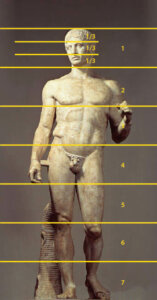
Can we say that the golden ratio fascinates everyone?
Some researchers argue that people do not prefer golden ratio relationships any more than they prefer other types of proportions. Non sappiamo dire scientificamente se è così, What is certain is that the golden ratio remains an element that implicitly or explicitly fascinates and captures our gaze and brings us closer to beauty!
This and other interesting facts can be found in the Art and Science album. Now available online
Explore the Art and Science album!